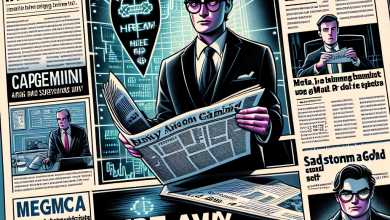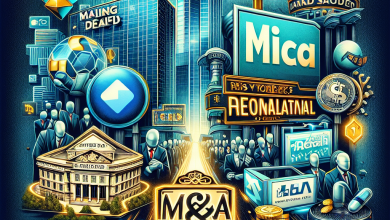S&P 500: How an AI picture caused the US leading index to crash
Monday was a shock for investors. Shortly after the US stock exchanges opened at 3:30 p.m. German time, the US stock index S&P 500 fell by around 30 points within minutes. Around $500 billion in market capitalization was pulverized. Luckily only for a short time: just as quickly as the index had crashed, it recovered again. Overall, the US market ended Monday with a very slight plus.
The reason for this is more remarkable than the mini-crash itself: unknown persons had spread an image generated by artificial intelligence (AI) that shows thick black smoke over the Pentagon, the US Department of Defense. Apparently, several online media thought the picture was real – and so did many investors. The fake image is likely to have evoked the trauma of September 11, 2001 in numerous US citizens: During the attacks, one of the terrorists flew a plane into the Pentagon and destroyed parts of the building.
Fake news that moves the markets is not a new phenomenon. Criminals keep spreading false reports about companies in order to manipulate their share prices. With the rise of social media over the past 15 years, such tricks have increased. AI now gives them a new quality: the ability to bring news to a huge audience in real time meets fakes, which are becoming increasingly difficult to identify as such.
Prime example of the dangers in the pay-to-verify system: This account, which tweeted a (very likely AI-generated) photo of a (fake) story about an explosion at the Pentagon, looks at first glance like a legit Bloomberg news feed. pic.twitter.com/SThErCln0p
— Andy Campbell (@AndyBCampbell) May 22, 2023
An arms race has broken out between programs that create fakes and those that are designed to recognize fake images or videos. The latter threaten to lose this arms race. It is true that AI-generated images, especially those of people, have so far been relatively easy to debunk. But that is likely to change soon.
Fact checker on a losing battle
In addition, there is more or less anarchy on some major social media platforms. This further encourages the spread of fake news. According to the news channel CNN, the Pentagon image was spread on Twitter by numerous accounts that gave themselves an official coat of paint with a blue tick. Among them was an account that claimed to belong to the Bloomberg news service. Under Elon Musk, Twitter has softened its verification policy: the blue tick used to be only for verified profiles with a certain reach. Today anyone can buy this former status symbol.
Investors must expect that there will be more fakes relevant to the capital market in the future – and that these will not be exposed as quickly as the Pentagon picture from Monday, the truthfulness of which could be checked quickly. As a result, sudden price outliers could occur more frequently. That wouldn’t be such a big problem for long-term investors with a diversified portfolio. But for investors who take short-term tactical bets on indices or individual stocks. Such speculation could become even more difficult in the future.
Also read: How to spot deepfakes and video scammers




